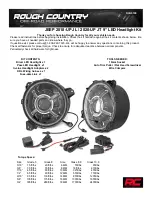
Depending on the detected deployment situation,
the components of the restraint system can be
activated or deployed independently of each
other:
R
Emergency Tensioning Device: frontal impact,
rear impact, side impact, rollover
R
Driver's air bag, front passenger air bag: fron-
tal impact
R
Knee bag: frontal impact
R
Side impact air bag: side impact
R
Window curtain air bag: side impact, rollover,
frontal impact
R
Rear air bag in the seat backrest of the front
seat: frontal impact
R
Belt air bag in the rear seat belt: frontal
impact
R
Cushion air bag in the reclining rear seat: fron-
tal impact
R
PRE-SAFE
®
Impulse Side: side impact
The installation location of an air bag is identified
by the AIRBAG symbol (
/
page 64).
Observe the information on the function of the
restraint system (
/
page 58).
Information on how the restraint system works
How the restraint system functions depends on
the severity of the impact detected and the appa-
rent type of accident.
For more information about types of accidents,
see "Overview of deployment situations"
(
/
page 57).
The activation thresholds for the components of
the restraint system are determined based on the
evaluation of the sensor values measured at vari-
ous points in the vehicle. This process is pre-emp-
tive in nature. The triggering/deployment of the
components of the restraint system must take
place in good time at the start of the collision.
Factors that can be seen and measured only after
a collision has occurred cannot play a decisive
role in air bag deployment. Nor do they provide an
indication of air bag deployment.
The vehicle may be deformed significantly without
an air bag being deployed. This is the case if only
parts that are relatively easily deformed are affec-
ted and the rate of vehicle deceleration is not
high. Conversely, an air bag may be deployed
even though the vehicle suffers only minor defor-
mation. If very rigid vehicle parts such as longitu-
dinal members are hit, this may result in suffi-
ciently high levels of vehicle deceleration.
Depending on the apparent type of accident and
the detected deployment situation, Emergency
Tensioning Devices and/or air bags supplement
the protection offered by a correctly worn seat
belt.
When enabled, an air bag can provide additional
protection for the respective vehicle occupant.
Potential protection provided by each air bag:
R
Knee bag: thigh, knee and lower leg
R
Driver's air bag, front passenger air bag: head
and ribcage
R
Window curtain air bag: head
R
Side impact air bag: ribcage, also pelvis for
front seat occupants
R
Rear air bag: head
58
Occupant safety
Содержание S-Class 2023
Страница 8: ...Left hand drive vehicles 6 At a glance Cockpit...
Страница 10: ...Left hand drive vehicles 8 At a glance Cockpit plug in hybrid...
Страница 12: ...Standard driver s display 10 At a glance Indicator and warning lamps standard...
Страница 15: ......
Страница 16: ...Driver s display with driver camera 14 At a glance Indicator and warning lamps with driver camera...
Страница 18: ...L Suspension red 575 Suspension yellow 575 16 At a glance Indicator and warning lamps with driver camera...
Страница 19: ......
Страница 20: ...18 At a glance Overhead control panel...
Страница 22: ...20 At a glance Door operating unit and seat adjustment...
Страница 24: ...Vehicles with a reclining rear seat 22 At a glance Control settings in the rear passenger compartment...
Страница 26: ...24 At a glance Emergencies and breakdowns...
Страница 200: ...To open or close turn controller 1 to the right or left 198 Climate control...
Страница 445: ...Fold cover 1 down in the direction of the arrow Breakdown assistance 443...
Страница 622: ......
















































